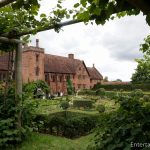Just a whiff of warmer weather and the piles of snow are rapidly shrinking. Water is splashing down the gutters in a happy symphony of gurgles. Yesterday the Groundhog predicted an early spring – fingers crossed he’s right. While we wait, though, let’s have a look at some springtime photos of that most romantic of cities, Paris.
This holiday began and ended in Paris with stops from Brittany to Bordeaux in between. All of these places were within half an hour’s walk from our hotel in Paris, Le Colbert.
Le Colbert was comfortable, unpretentious and conveniently located near to Notre Dame Cathedral.
Let’s set off on a walking tour, shall we?
Flowers, flowers, everywhere: primroses, daffodils and tulips.
Speaking of Notre Dame, here we are.
Majestic, elegant and unmistakable; it’s truly a glorious cathedral, begun in 1160 and almost completed by 1260. Regular readers of this blog will know I’m something of a cathedral junkie, and the more of them I visit, the more the unique aspects of each stand out. Notre Dame is famous for employing the new technology of its time: the vaulted arch, which made possible a much higher ceiling than its predecessor, the rounded arch, had previously allowed. Vaulted arches are why Notre Dame is relatively light and airy.
But the higher ceiling created a weight problem; the solution was the flying buttresses. If you’ve ever wondered exactly what a flying buttress is (no, it’s not a circus manoeuvre) they’re the arched supports that hold up the walls. Wikipedia describes them as “an arch that extends from the upper portion of a wall to a pier of great mass, in order to convey to the ground the lateral forces that push a wall outwards, which are forces that arise from vaulted ceilings of stone and from wind-loading on roofs.”
You can see them even more clearly here. Swooping downwards, they’ve survived for more than 800 years, keeping Notre Dame safe and upright. Amazing.
Coming round to the front, we see the deceptively small entrance doors, dwarfed by the multitude of carved figures that surround them.
The steeple soars toward the blue, blue sky.
All the embellishment is beautiful, yet a touch gruesome; gargoyles everywhere you look.
The building is crawling with them.
Notre Dame has some of the finest rose windows in Europe, but we’re only going to see them from the outside.
This is a walking tour, so we are going to keep going along the Île Saint-Louis and enjoy the sunshine.
It was an absolutely beautiful day and we made the most of it. I picked up that scarf from a shop along the wa – I couldn’t resist the vibrant colours. We even got Glenn sporting a scarf on this holiday. Oh-so-French!
Bridges, streetlamps and gardens abound in Paris – beauty everywhere you turn.
Like the Parisians, I love to stroll down the steps towards the river, lean against the balustrade and drink in the sunshine.
Paris boasts a lot of parks and they’re all the more charming for being set among low-rise buildings. I’ve become so accustomed to high-rises in North American major cities, with the shade and wind tunnels that accompany them, it takes a bit of mental searching to recognize why Paris feels so different. But feel different it does. I wonder if that’s why Paris is called the City of Light.
How here’s some trans-Atlantic diplomacy.
My French is very poor, so please forgive any errors, but I believe the rough translation is: upon the occasion of the Universal Exposition in 1900, the sculptor Auguste Bartholdi offered the museum at Luxembourg a bronze model of the Statue of Liberty, which was placed in the Garden of Luxembourg in 1906. The original statue was retired in 2012 for reasons of conservation and replaced with the bronze replica you see here.
The French are very big on Liberty. The motto of the French Revolution was Liberty, Fraternity and Equality, though one wonders how the nobility felt about the effect of the guillotine on their liberty.
And here we are in the Jardin du Luxembourg.
The garden and Palace were begun in 1612 by Marie de’ Medici, widow of King Henry IV of France. Today the Luxembourg Palace is owned by the French Senate, which meets in the Palace.
The garden is clearly a favourite spot for reading, relaxing,
and playing chess.
Lawns, fountains and tortured trees. (Why are the French so inclined clip things into unnatural shapes? Some kind of compensation for all the joie de vivre? I just don’t get it.)
The garden is also famous for its statues, mostly dedicated to the Arts.
This gentleman, painter Jean-Antoine Watteau, seems to be looking right at you as the lady (representing Youth) coquettishly places flowers.
Leaving the garden, we worked our way back down toward the hotel.
Oh, I’m getting hungry.
Let’s pick a restaurant. No, not pizza. It’s got to be seafood, now I’ve seen those luscious crabs.
Almost there.
We’re back. A nap is in order, then a glass of champagne, then dinner.
Our next stop will be Fontainebleau, site of Napoleon’s abdication before being exiled to Elba. That wasn’t the end of the story, though. More on that in a later blog.
I’m sharing this post with Between Naps on the Porch.
































































Beautiful photos! One of my dreams is to visit Paris in the spring. I was there last summer though, and loved it. a Parisian spring may have to wait a few years.
Maybe wait until they’ve redone Notre Dame. It’ll be interesting to see how that all comes together. What a tragedy that was.